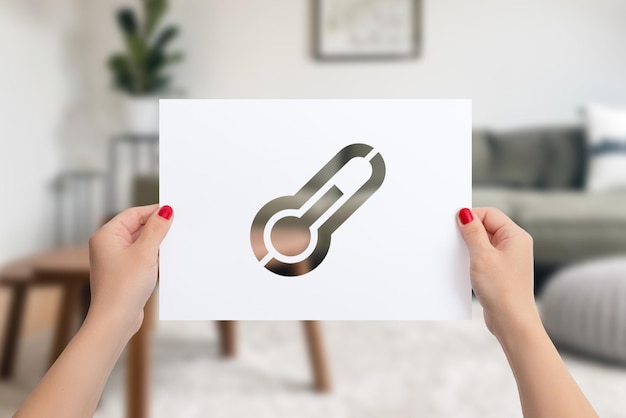Get Help with Utility Bills: 2025 Energy Assistance Programs

Facing challenges with your utility bills? In 2025, numerous energy assistance programs are available to help eligible households manage and pay their energy costs, ensuring access to essential services like heating and electricity.
Are you finding it hard to keep up with your utility bills? You’re not alone. Many households across the US struggle to afford essential services like heating and electricity. The good news is that how to get help paying your utility bills: energy assistance programs in 2025 is available to eligible individuals and families, offering a crucial lifeline during tough times.
Understanding Energy Assistance Programs
Energy assistance programs are designed to alleviate the burden of high utility costs for low-income households. These programs can provide financial assistance, weatherization services, and other resources to help families maintain access to essential energy services.
The availability of these programs and their specific benefits can vary depending on your state and local community. It’s important to research and understand the programs available in your area to determine your eligibility and how to apply.
Types of Assistance Available
Energy assistance programs offer a range of support options to address different needs. Some programs provide direct financial assistance to help pay utility bills, while others focus on improving energy efficiency to reduce long-term energy consumption.
- Direct Financial Assistance: Provides funds to help pay current or past-due utility bills.
- Weatherization Assistance: Offers services to improve the energy efficiency of homes, such as insulation and sealing air leaks.
- Energy Counseling: Provides guidance on energy conservation and budgeting strategies.

Understanding the different types of assistance available can help you identify the programs that best suit your needs. By taking advantage of these resources, you can reduce your energy costs and maintain access to essential services.
The Low Income Home Energy Assistance Program (LIHEAP)
The Low Income Home Energy Assistance Program (LIHEAP) is a federally funded program that provides assistance to low-income households to help them pay their energy bills. LIHEAP is the primary federal program dedicated to helping families with their energy costs.
LIHEAP assistance can be used to pay heating or cooling bills, depending on the program’s guidelines and the household’s needs. The program also offers assistance with weatherization and energy-related home repairs.
Eligibility for LIHEAP
LIHEAP eligibility is primarily based on household income and size. Income limits vary by state but are generally set at or below 150% of the federal poverty level.
- Income: Must meet the income limits established by the state.
- Household Size: The number of people living in the household is considered.
- Citizenship: Applicants must be U.S. citizens or qualified aliens.
Each state administers its own LIHEAP program, so eligibility requirements and benefit levels may vary. Contact your local LIHEAP office for specific details about the program in your area.
State-Specific Energy Assistance Programs
In addition to LIHEAP, many states offer their own energy assistance programs to supplement federal funding. These programs can provide additional support to low-income households and address specific energy challenges within the state.
State-specific programs may have different eligibility requirements and benefit levels than LIHEAP. Some programs may also target specific populations, such as seniors or families with young children.

Examples of State Programs
Several states have implemented innovative energy assistance programs to meet the needs of their residents. These programs can serve as models for other states looking to enhance their energy assistance offerings.
- California’s CARE Program: Offers discounted energy rates to low-income households.
- New York’s HEAP: Provides heating assistance benefits to eligible households.
- Texas’s CEAP: Offers comprehensive energy assistance services, including bill payment assistance and weatherization.
Researching state-specific programs in your area can help you identify additional resources to help with your energy bills. These programs can provide valuable support and help you access the assistance you need.
Utility Company Assistance Programs
Many utility companies offer their own assistance programs to help customers who are struggling to pay their bills. These programs can include payment plans, budget billing options, and direct financial assistance.
Utility companies often partner with local community organizations to provide additional resources and support to customers in need. These partnerships can help connect customers with a wide range of services, including energy counseling and weatherization assistance.
How to Find Utility Company Programs
To find out about utility company assistance programs in your area, contact your local utility provider directly. Most companies have information about their assistance programs on their website or in their customer service materials.
When contacting your utility company, be prepared to provide information about your income, household size, and energy usage. This information will help the company determine your eligibility for assistance and recommend the most appropriate programs for your needs.
Other Resources and Support
In addition to LIHEAP, state programs, and utility company assistance, several other resources can help with your energy bills. These resources include community organizations, non-profits, and government agencies.
These organizations can provide a range of services, including financial assistance, energy counseling, and weatherization assistance. They can also help you navigate the complex landscape of energy assistance programs and connect you with the resources you need.
Community Organizations
Community organizations play a vital role in providing energy assistance to low-income households. These organizations often work directly with families to assess their needs and connect them with the appropriate resources.
- Salvation Army: Offers emergency assistance with utility bills.
- United Way: Provides a variety of services, including energy assistance and financial counseling.
- Local Community Action Agencies: Administer LIHEAP and other energy assistance programs.
Reaching out to community organizations in your area can provide you with access to a wide range of support services and resources. These organizations can help you navigate the challenges of paying your energy bills and maintain access to essential services.
Preparing for 2025: What to Expect
As we approach 2025, it’s important to stay informed about potential changes to energy assistance programs and resources. Economic conditions, government policies, and technological advancements can all impact the availability and effectiveness of these programs.
Staying up-to-date on the latest developments in energy assistance can help you plan for the future and ensure you have access to the resources you need. Monitor news sources, government websites, and community organization announcements to stay informed.
Potential Changes and Trends
Several factors could influence energy assistance programs in 2025. These include changes in federal funding, shifts in state policies, and the increasing adoption of renewable energy technologies.
- Federal Funding: The level of federal funding for LIHEAP and other energy assistance programs is subject to change based on congressional appropriations.
- State Policies: States may implement new policies to address energy affordability and promote energy efficiency.
- Renewable Energy: The growth of renewable energy sources could lead to new assistance programs and incentives for low-income households.
By staying informed about these potential changes, you can better prepare for the future and ensure you have access to the resources you need to manage your energy bills.
| Key Point | Brief Description |
|---|---|
| 💡 LIHEAP | Federal program helping low-income households with energy bills. |
| 💰 State Programs | Supplement LIHEAP, with varying eligibility and benefits. |
| 🏢 Utility Assistance | Offered by utility companies; includes payment plans and direct aid. |
| 🤝 Community Support | Local orgs like United Way & Salvation Army offer various aids. |
Frequently Asked Questions (FAQ)
▼
LIHEAP is administered by each state. Contact your state’s LIHEAP office to find out specific application procedures and required documentation.
▼
Typical documents include proof of income, proof of residency, social security numbers for household members, and your most recent utility bill.
▼
Yes, many energy assistance programs offer assistance with past-due bills to help prevent service disconnection. Check with your local program.
▼
Yes, weatherization assistance programs can help improve your home’s energy efficiency by providing insulation, sealing air leaks, and more.
▼
Explore state-specific programs, utility company assistance, and community organizations for other options. Eligibility criteria vary across programs.
Conclusion
Navigating the landscape of energy assistance programs can feel overwhelming, but numerous resources are available to help you manage your utility bills. By understanding the different programs, exploring state-specific options, and reaching out to community organizations, you can find the support you need to maintain access to essential energy services and ensure a more secure and comfortable future.






